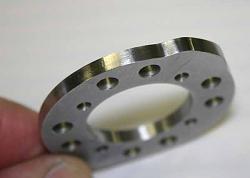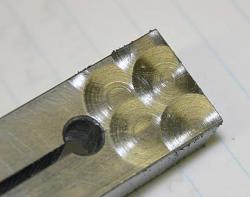The photo you included in your post appears to be a rifle bolt. Brownells gunsmith supply has a jeweling fixture for similar parts that allows the part to be accurately indexed for rotary and linear spacing. I believe they even sell the Cratex abrasives and grit compounds. You may also want to check Midway USA as well. On your flat panel project you will want to figure out a way to index the part at the desired spacing. A milling machine would be handy.
Years ago, I used a simple pencil with a type writer eraser and a drill press for small parts. Good luck with your project!


 LinkBack URL
LinkBack URL About LinkBacks
About LinkBacks


 Reply With Quote
Reply With Quote
 . Tomorrow I will search better!
. Tomorrow I will search better!





Bookmarks